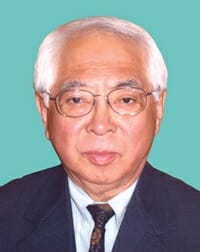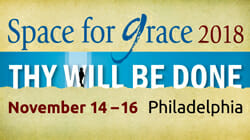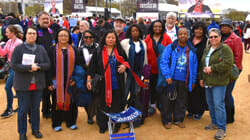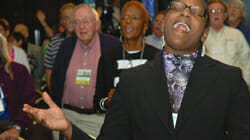My American Story
by Yosh Nakagawa
 As President Franklin D. Roosevelt predicted, the date of the Empire of Japan’s attack on Pearl Harbor has, indeed, lived on in infamy. National Pearl Harbor Remembrance Day, declared by Congress in 1994, has certainly helped, along with memorials at the sites of the sunken ships USS Arizona and USS Utah.
As President Franklin D. Roosevelt predicted, the date of the Empire of Japan’s attack on Pearl Harbor has, indeed, lived on in infamy. National Pearl Harbor Remembrance Day, declared by Congress in 1994, has certainly helped, along with memorials at the sites of the sunken ships USS Arizona and USS Utah.
For me, an equally infamous date is Feb. 19, 1942. That’s when Roosevelt signed Executive Order 9066, which stole the cherished American ideals of life, liberty and the pursuit of happiness from more than 120,000 men, women and children of Japanese descent living on the West Coast. As I reflect on the 70th anniversary of my family’s journey to an American concentration camp in Idaho, I wonder how many Americans remember this part of the Pearl Harbor story.
I was in fourth grade when I was forced from my home in Seattle. Thankfully, my father, mother and sister went with me to the ironically named “Camp Harmony” at the Puyallup Fairgrounds and later to our internment at Minidoka. Many of my friends who watched fathers and mothers taken away by the FBI went to the camps without them, and without knowing where they were or if they would see them again.
We had a week to prepare for our departure to where, we didn’t know, and for how long, we didn’t know. At Camp Harmony, many families were housed in the fairgrounds’ animal stalls, which reeked of urine. At Minidoka, we lived in military-style barracks, each family in a one-room apartment with a pot-bellied stove and single light bulb hanging from the ceiling in the middle of the room.
I remember the guard towers, the soldiers with their weapons trained on us, the barbed wired that separated us from freedom. We lined up at the mess hall for breakfast, lunch and dinner. We walked to communal bathrooms with rows of toilets and no partitions. We lost not only our freedom; we lost our dignity, too.
Before Executive Order 9066, my parents ran a small grocery store where we lived near today’s Seattle University. When we returned in 1945, the business was gone and we were homeless; my mother spent the rest of her life working as a domestic in affluent people’s homes, and my father worked as a common laborer in a gunnysack company.
Beyond the physical deprivations we endured, there was a deeper wound—the sense of shame that this forced exile left with me and my people. Just because of our ancestry, because of who we are, because we looked like the evil enemy, we became the enemy, too. Yet, two-thirds of us—including me—were Americans, born on American soil. What happened to our inalienable rights guaranteed by the U.S. Constitution?
When my country turned from me, let it be said, the church stood beside me. During that time of segregation and shame, missionaries from The American Baptist Home Mission Society and the Woman’s American Baptist Home Mission Society followed us from Japanese Baptist Church in Seattle to internment in Minidoka, Idaho. There—by leading worship in the camp, retrieving belongings for us in Seattle, and listening to our stories—they affirmed our humanity, encouraging perseverance and hope.
Our journey became their journey. Our pastor, the Rev. Emery Andrews, was thrown out of a café in nearby Idaho Falls by the owner for being a “Jap lover.” That same man, who also owned the house that the Rev. Andrews rented, stood outside hurling epithets at the pastor and later evicted the family for sympathizing with those incarcerated in Camp Minidoka.
The courage and conviction exhibited by the Rev. Andrews and other missionaries inspired me to Christian baptism while I was at Minidoka. Every day I saw American Baptist missionaries standing for justice, while I lived in the midst of institutionalized injustice.
There are, of course, more than 120,000 Japanese American stories about those years of incarceration, and these stories are slipping away with time. But I have come to believe that the story of Executive Order 9066 is not my story and not a Japanese American story, but simply an American story.
History can repeat itself. We must never forget that. I watched the fervor that followed 9-11, wondering how patriotism would be revealed to Muslims in America.
At the Bainbridge Island Japanese American Exclusion Memorial, where the first 227 Japanese American men, women and children were taken from their homes in 1942, there’s a reminder that serves us well today—Nidoto Nai Yoni (“Let It Not Happen Again”).
Yosh Nakagawa, who served as vice president of American Baptist Churches USA, 2002-2003, is a lifelong member of Japanese Baptist Church. He is working with the U.S. National Park Service to build the Minidoka Internment National Monument in southern Idaho.






